Goal
Learn two tools to make the essence of the gospel clear in different cultural contexts
Introduction
In Cru’s first years Bill Bright wrote a summary of the gospel called “God’s Plan.” Driven by a desire to communicate theological truths in simple, easy-to-understand ways, he used this booklet to train staff members in evangelism. In 1956 he invited a sales consultant to address Cru’s staff members on the importance of having a focused message. The consultant suggested that every successful salesperson needed a simple and often repeated message. Bill Bright bristled at the suggestion that successful Christian leaders, including him, had a “spiritual pitch” that they repeated in their gospel presentations. Bright recalled: “The very thought that I needed to resort to what I considered Madison Avenue techniques to do the spiritual work of God was repugnant and offensive to me. I resented anyone suggesting that I or anyone else who truly loved and desired to serve the Lord had to depend on gimmicks or that we were not led of the Spirit” (Amazing Faith, page 71). As Bright reflected on the salesman’s comments, he realized that he did indeed say the same thing in sharing his faith. Bright polished “God’s Plan” and it became “The Four Spiritual Laws” tract. Share your experiences in using a booklet—like “The Four Spiritual Laws”—to explain the gospel to someone.
Bible Passage & Questions
1 Thessalonians 1:8-10, 2:8
Put this passage in your own words.
What stands out most from these verses?
Paul authenticated Jesus’s message with his life. How are both–life and message–important in sharing the gospel?
Consider & Discuss
As a group, make a pros/cons list of the benefits of using a booklet or app that introduces the essence of the gospel.
Then, reflecting back on the past year (or two), how did people place their faith in Christ?
Have everyone on your team/group download the GodTools app on their smartphone. Under “All Tools” in the top tab, select:
- “Knowing God Personally,” (or “THE FOUR,” which is a simplified version of “Knowing God Personally”),
- “Honor Restored,” and
- “Power over Fear.”
These tools were designed with different audiences in mind. As you look over each tool, consider which one would be most effective with the people on your “Top Five List”? Why?
Pick one of the tools and practice going through it with a partner. Have one person take the role of the Christian and the other, the non-Christian. (Of course, the best practice is sharing the App or booklet with someone new!)
Next Steps (Individually & Collectively)
Memorize the main points and one key verse for each section of one of the GodTools resources that you are unfamiliar with. Then, recite these main points with a teammate or ministry coach.
(Bonus: memorize the main points and one key verse for multiple tools in GodTools.) If possible, pick a time in the upcoming week to go practice sharing the tools.

